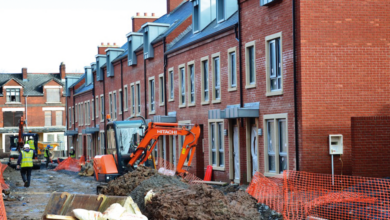Selection scheme under the microscope
 Michael McKernan considers the proposed changes to the scheme.
Michael McKernan considers the proposed changes to the scheme.
Notwithstanding minor adjustments over time, the housing selection scheme has governed the once highly controversial process of allocating social housing in Northern Ireland for the last thirty-five years. Although it is considered to have served its purpose well during that time, taking the controversy out of housing allocation by applying a transparent points ranking system based on applicants’ objective need, it is now very much under review. Indeed, the scheme has been under review since late 2012 when the Northern Ireland Housing Executive consulted on a series of proposed changes.
The real drive for the review however is coming from the Housing Executive’s master, the Department for Social Development, which has lead responsibility for housing policy in Northern Ireland.
Essentially, at a time when there are 42,000 applicants on the waiting list for social housing (around half in housing stress and half of these statutorily homeless) and most with little prospect of being allocated a social house in the foreseeable future, questions arise around the effectiveness of the allocation system.
There is firstly the desire to have a more frank engagement with applicants well down the waiting list who, due to the low rate of social housing new-build and the low rate of turnover of tenancies, are unlikely to ever be allocated a house. ‘Choice-based letting’ is one reform proposal which, inter alia, allows some of these applicants to opt for housing in difficult-to-let estates where normal offers are being regularly turned down. This is currently being piloted and, if applied successfully, could have the double benefit of reducing waiting lists and re-introducing otherwise vacant and deteriorating stock.
There are also proposals to improve the efficiency of social housing stock utilisation by allowing managers greater flexibility in transferring tenants to more suitable accommodation, freeing up spare capacity. Another proposal is to allow tenants themselves, where appropriate, to swap accommodation directly.
However, the biggest suite of proposals for change relate to countering the under-occupancy of social housing units. In this context, with around 80 per cent of social tenants in receipt of housing benefit, there is now a requirement that allocations policy implements the new housing benefits regulations which bear down on under-occupancy of social housing. This measure, controversially referred to by its critics as the ‘bedroom tax’, is a central part of the Coalition Government’s flagship welfare reform programme.
A further aspect of welfare reform-inspired change in housing is a raising of the age at which applicants are deemed to have a requirement for their own separate accommodation. This will change how the scheme measures objective need into the future.
Apart from the proposals to try and squeeze greater utilisation out of limited available stock and the various tightenings of entitlement dictated by welfare reform (which worry many housing practitioners) there are also some other criticisms of the proposed reform of the housing selection scheme.
Some commentators believe that now that Northern Ireland has ‘got peace’ there should no longer be ‘intimidation’ points available under the scheme. There are claims that the allocation of substantial additional points to applicants who have been intimidated has distorted waiting lists and created a culture of ‘points chasing’ There are, however, some proposed changes around applicant ‘banding’ which would counter points chasing.
An even more radical criticism is that nothing is being proposed to counter the religious (as well as class) segregation of social housing tenants, which critics claim is ‘perpetuated’ by the housing selection scheme. This is a profoundly difficult issue to tackle as any perceived attempt at ‘social engineering’ through the allocations system would almost certainly end up in the courts.
It is anticipated that the revised scheme will be determined by the end of the year. The change is likely to be more technical than transformational.





